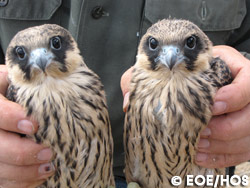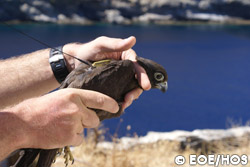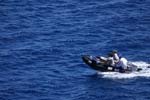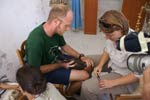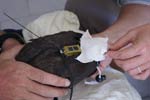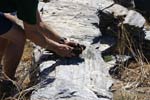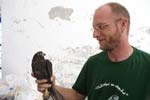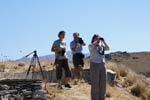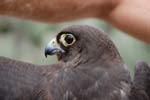|
|
 |
|
Satellite telemetry of Eleonora’s Falcon migration
For the first time in Greece, satellite telemetry is being used for tracking of Eleonora’s Falcons migration from Greece to their wintering areas in SE Africa and Madagascar, in order to investigate the migration routes followed by the birds. For this purpose, birds were equipped with light, solar-powered satellite transmitters based on ARGOS system, which are used worldwide to track movements of various animal and avian species. Technological developments during the last years allowed for the creation of lighter transmitters suitable for monitoring of smaller species, such as Eleonora’s Falcon. In continuation of the LIFE Project «Conservation Measures for Falco eleonorae in Greece» (LIFE03NAT/GR/000091), 4 Eleonora’s Falcons (2 adults and 2 juveniles) were equipped with satellite transmitters in their colony on the island of Andros.
Similar actions have been implemented during the recent years in Spain (Balearic Islands) and on Sardinia and demonstrate that, on the contrary to the earlier perception that Eleonora’s Falcons migrate routes follow the coast of Northern Africa, they actually cross directly the Sahara desert to reach their destination as fast as possible. Related Websites: Greece hosts around 85% of global breeding population of the Eleonora’s Falcon, meaning that more than 12,000 pairs breed every year in Greece. As shown on the map below all four birds on their way back from Greece, avoid crossing the Sahara desert by following the direction of the river Nile. Communication:Hellenic Ornithological Society |
|
|
|
